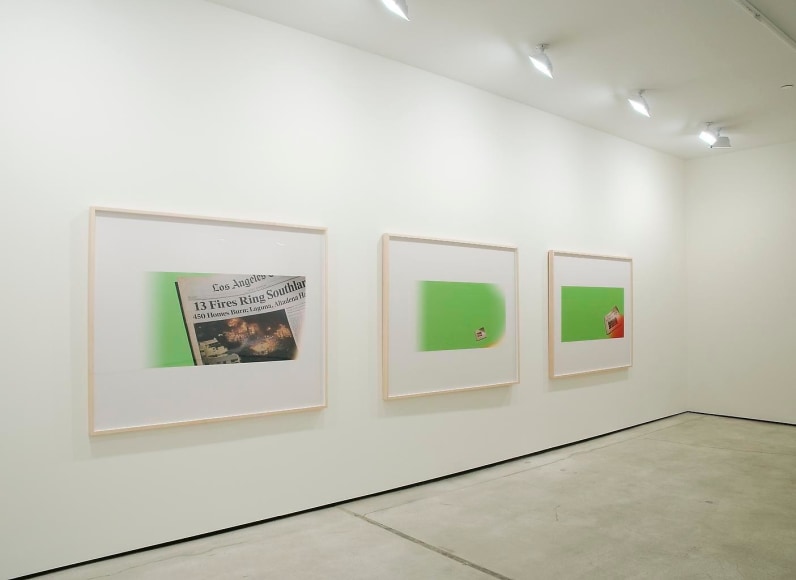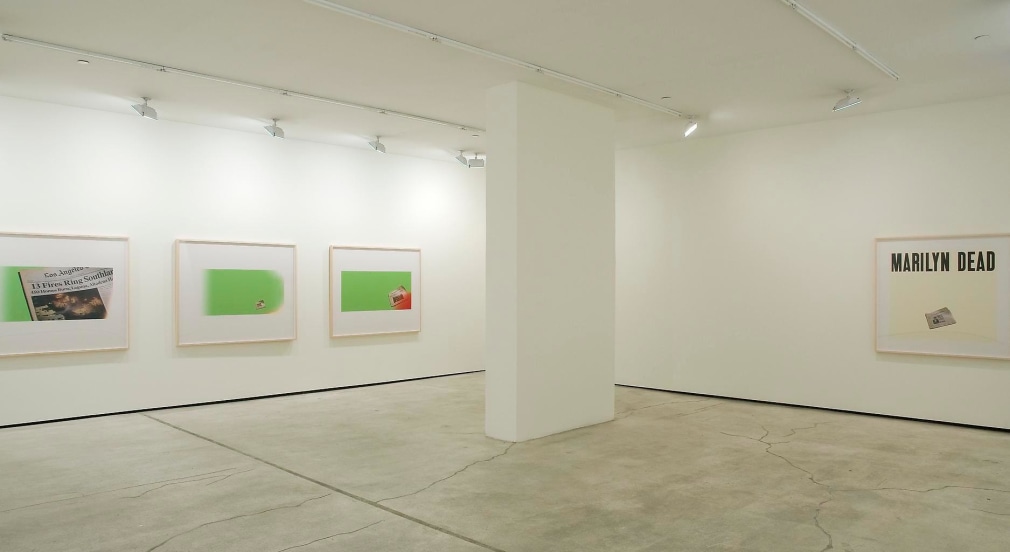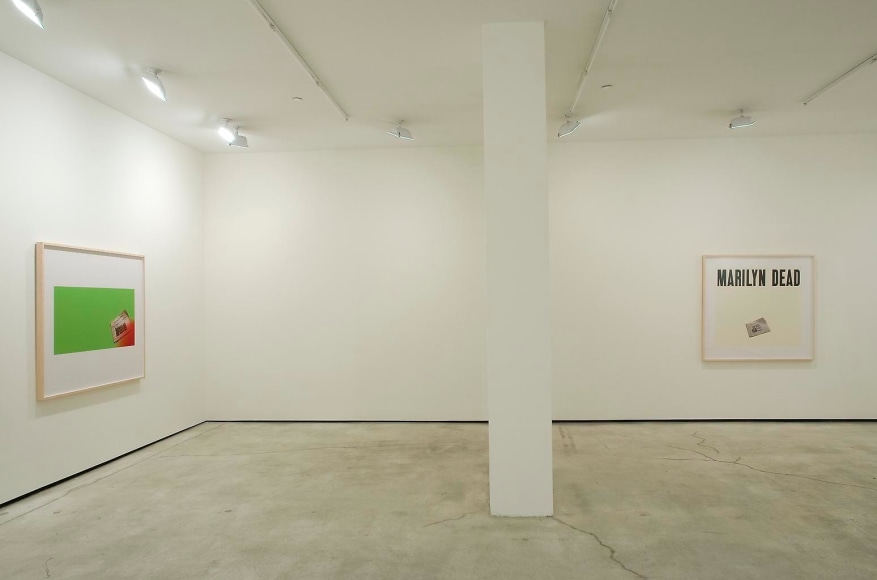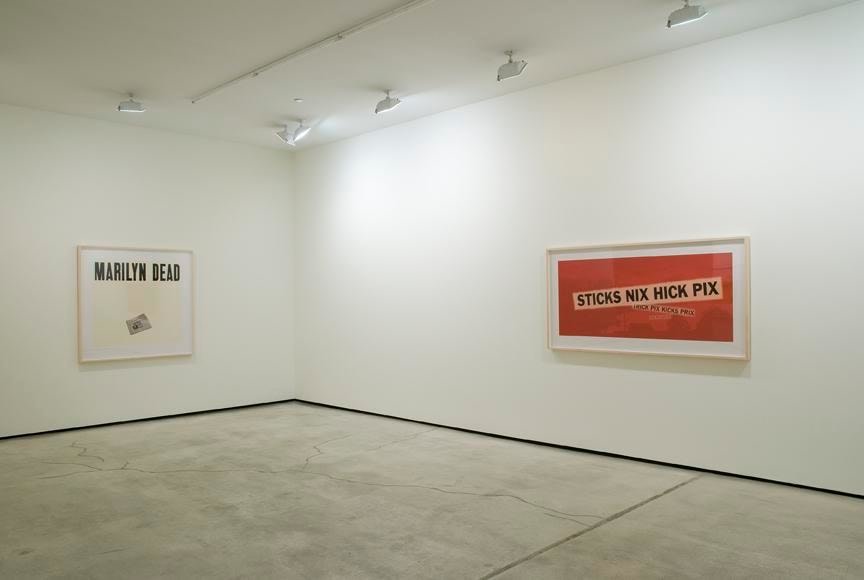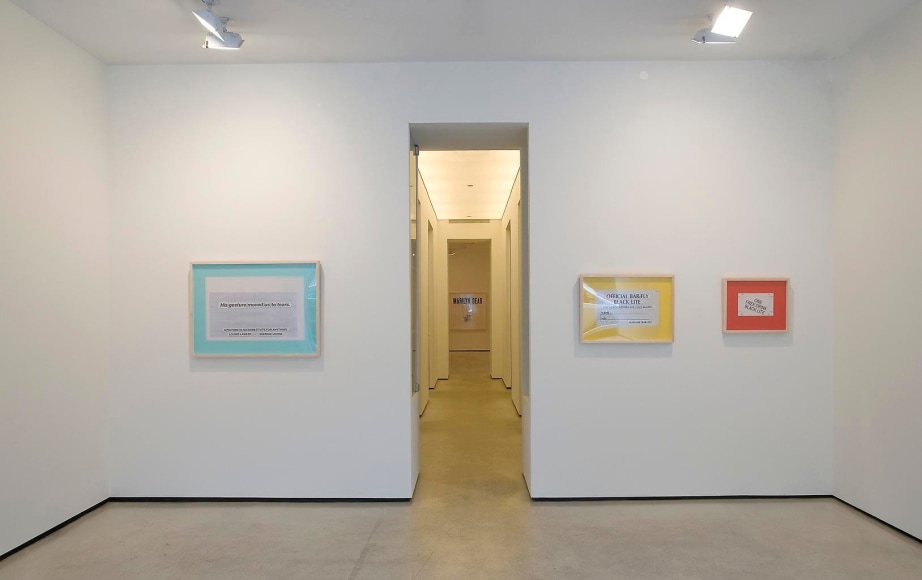Marc Jancou Contemporary is pleased to announce the exhibition Frame Tales by Larry Johnson.
A quintessential LA artist, Larry Johnson rose to prominence in the 1980s with a highly formalized, yet intensely conceptual body of work. Influenced by the work of LA artists, Ed Ruscha, Douglas Huebler, and John Baldessari, Johnson's work approaches the medium of photography as a conceptual framework in which text and image are seamlessly united. With the inherent structural status of photography being that of a copy, the photographic multiple then becomes a series of quotations of the original, which Johnson playfully uses to his advantage: the slick, mediated surfaces lend a certain aloofness to the otherwise emotionally charged content.
Perpetuating his long-standing interest in Hollywood, Johnson has incorporated green screen backgrounds in a new series of works titled Green Screen Memories, which feature the cover of three LA Times newspapers from 1993 depicting the Californian wild fires. Blurred white edges close in on the images, similar to the effect of white fade-outs used in early film experiments by directors such as Fassbinder.
Reminiscent of Josef Albers' modernist studies in color and optics Untitled (Moved to Tears) and Untitled (Ice Breaker) depict stylized versions of drink tickets from Blacklite, a now defunct Hollywood gay bar, shown in context with an appropriated postcard created by Sherrie Levine and Louise Lawler. The original quote was taken from a conversation between Hollis Frampton and Carl Andre in which Frampton said, "A photograph is no substitute for anything." Lawler and Levine reinterpreted this statement as "A Picture is no Substitute for Anything" and used it as the title for a series of collaborations.
The quote found in Untitled (PIX PIX PIX PIX), "STICKS NIX HICK PIX," was one of the most famous headlines to appear in an American publication. Printed on the cover of Variety on July 17, 1935, the article chronicled rural America's (those living in the "sticks") reaction ("nix") to films ("pix") about people in rural areas ("hick"). Variety referred to this use of language as "Slanguage," a practice well suited to Johnson's own lingual play in Untitled (PIX PIX PIX PIX), which is a mashup of this headline in addition to More Pricks Than Kicks, Samuel Beckett's collection of prose from 1934, and Nick Cave and the Bad Seed's 1986 release, Kicking Against the Pricks. Untitled (PIX PIX PIX PIX) also references Ed Norton's wife, Trixie, from the 1950s sitcom, The Honeymooners. The red glow of the work and "xxx" in the lower right hand corner remind us of the sardonic humor that runs throughout Johnson's work.
Larry Johnson was born in 1959 in Lakewood, California, and currently lives and works in Los Angeles, California. He received his BFA and MFA from the California Institute of the Arts. His work has been featured in exhibitions at the Hammer Museum in Los Angeles, the Museum of Contemporary Art, Los Angeles, the Centre Pompidou, Paris, Louisana Museum, Denmark and at the Whitney Museum of American Art in New York.
For more information please contact Kelly Woods at kelly@marcjancou.com.
